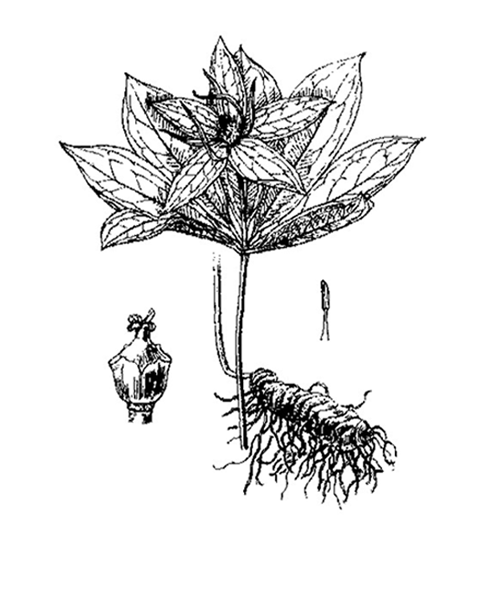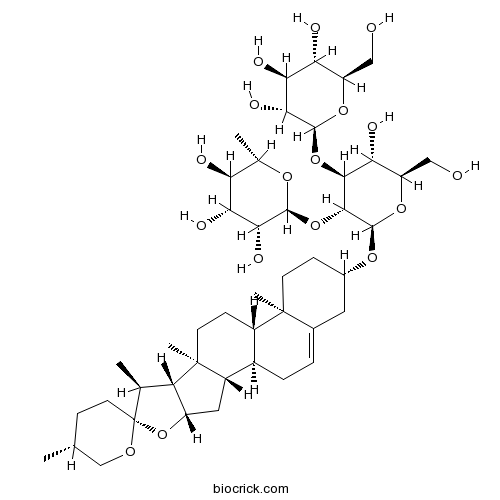Paris polyphylla var. yunnanensis
Paris polyphylla var. yunnanensis
1. The products in our compound library are selected from thousands of unique natural products; 2. It has the characteristics of diverse structure, diverse sources and wide coverage of activities; 3. Provide information on the activity of products from major journals, patents and research reports around the world, providing theoretical direction and research basis for further research and screening; 4. Free combination according to the type, source, target and disease of natural product; 5. The compound powder is placed in a covered tube and then discharged into a 10 x 10 cryostat; 6. Transport in ice pack or dry ice pack. Please store it at -20 °C as soon as possible after receiving the product, and use it as soon as possible after opening.

Natural products/compounds from Paris polyphylla var. yunnanensis
- Cat.No. Product Name CAS Number COA
-
BCN5360
Gracillin19083-00-2
Instructions

-
BCN1178
Salvigenin19103-54-9
Instructions

[Gray mold disease of Paris polyphylla var. yunnanensis and its pathogen identification].[Pubmed: 30111050]
Gray mold disease is one of the most important diseases of planted Paris polyphylla var. yunnanensis, the disease appeared primarily as blossom blights and fruit rots, but also as stem rots, leaf rots.In this study, the pathogenetic fungi was isolated from plant tissue or sclerotia that covering the fruit of diseased P. polyphylla var. yunnanensis, the pathogen was certified according to Koch's Postulation. The pathogen produced abundant black, irregular sclerotia on surface of diseased plants and potato dextrose agar. The conidiophores and clusters of oval conidia resembled a grape-like cluster, the size of conidia was 9.70-13.70 μm [average of (11.32±0.82)μm]×7.05-9.12 μm [average of (8.24±0.48)μm], the microconidia produced on potato dextrose agar were spherical,and the size was (3.34±0.31) μm,the pathogen was identified as Botrytis sp based on morphological characteristics. The DNA sequence analysis of the G3PDH, HSP60, RPB2 genes placed the pathogen in a single clade that outside defined species of Botrytis, so the pathogen could be identified as a new species of Botrytis. The pathogen requires 20 °C, pH 8, darkness or low light condition for the best growth.
Untiring Researches for Alternative Resources of Rhizoma Paridis.[Pubmed: 29974350]
Rhizoma Paridis (RP, ), a traditional Chinese medicine, is the rhizoma of Paris polyphylla var. yunnanensis (PPY) or P. polyphylla var. chinensis which are widely used as important raw materials for several Chinese patent drugs. However, the wild resources of these herbs have become less and less due to their slow-growing characteristics and previously excessive excavation. This review covers untiring investigations on alternative resources of RP by our research group over the past decades, including non-medicinal parts of PPY as well as other plants of Liliaceae and Liliflorae families. The arial parts of PPY and the whole plants of Trillium kamtschaticum might be alternative resources for RP based on the fact that they shared the same or similar saponins and bioactivities.
Substituting one Paris for another? In vitro cytotoxic and in vivo antitumor activities of Paris forrestii, a substitute of Paris polyphylla var. yunnanensis.[Pubmed: 29454914]
Chong-lou (Paris polyphylla var. yunnanensis or P. polyphylla var. chinensis) is traditionally used as an anticancer medicine in China. It is also the material basis of some Chinese patent anticancer medicines, such as Gan-Fu-Le capsules, Bo-Er-Ning capsules, Lou-Lian capsules, Ruan-Jian oral liquid, and Qi-Zhen capsules. P. forrestii, a substitute for Chong-lou, is planted at a large scale in the Yunnan Province of China.


